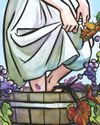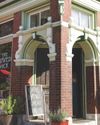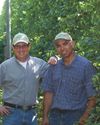The Quest to Explain Sourness in Beer.

Shortly after it opened in 2006, I found myself sitting in the subterranean bunker that is San Francisco’s City Beer Store, sipping on Rodenbach Grand Cru, a beer I hadn’t tried before. Sour fruit aromas and wine like tannic notes greeted my nostrils. “Don’t swallow,” my survival instincts insisted. I ignored them though, and my throat constricted as the sharp, intense Flanders Red made its way toward my stomach. The acetic acid was jolting to my system, yet for some reason I kept drinking.
Despite its bracing flavor, the types of sour-producing bacteria found in highly acidic beers like Rodenbach’s Grand Cru aren’t pathogens. In fact, as an increasing number of consumers have discovered, tart beer is tasty beer. But is there such a thing as too much tartness? How do we determine sourness? And how should brewers relay the quantifiable determination of sourness in beer?
As consumers, we’ve come to rely on several scales and measurements to make judgments about a beer even before we’ve taken a single sip. ABV, or alcohol by volume, reveals the alcohol content so we can anticipate the effect of a beer’s strength. IBU, or International Bitterness Units, tell us what sort of bitter punch a beer is likely to deliver to our taste buds. OG (original gravity) and FG (final gravity) paint a portrait of a given beer’s residual sugars, giving us a sense of how sweet a beer will taste. Even SRM (Standard Reference Method) indicates the darkness and opacity of a beer, alerting us to the flavors the given malts ought to impart. So what’s the best way to communicate a beer’s sourness?
This story is from the #118 (November 2016) edition of BeerAdvocate magazine.
Start your 7-day Magzter GOLD free trial to access thousands of curated premium stories, and 9,000+ magazines and newspapers.
Already a subscriber ? Sign In
This story is from the #118 (November 2016) edition of BeerAdvocate magazine.
Start your 7-day Magzter GOLD free trial to access thousands of curated premium stories, and 9,000+ magazines and newspapers.
Already a subscriber? Sign In

Trainers Incorporate Beer-Making Equipment Into Brewery-Hosted Workouts
On a typical Saturday morning, Johnathan Wakefield can be found hoisting kegs out front of his brewery, J. Wakefield Brewing Co., in Miami’s Wynwood neighborhood.
Mug Club 2.0
Craft Brewers Modify Loyalty Programs to Sow Deeper Relationships

Fruit Of The Vine
Now that fall’s here, it’s harvest time for a great many things. To zymurgical enthusiasts, that means grape season.

The Shaved Duck
Tucked away in an attractive brick neighborhood, just east of the second largest urban park in St. Louis, sits The Shaved Duck, one of the finest beer and barbecue joints west of the Mississippi.

John Segal Jr. The Hops Farmer
Although John Segal Jr. spent many childhood summers in Washington’s Yakima Valley and once brought a block of hops to show-and-tell, the third generation hops farmer never envisioned taking over the family business.

9 steps to beerdom
when david morgan first got into the craft business, it was as a retailer, and beer evangelism was a heavy lift. now, more than 15 years later, morgan is at the production end of the business, and the wind is at his back. singlespeed brewing, the cedar falls, iowa, nanobrewery morgan founded in 2012, is on the brink of a major expansion, as singlespeed exits its nano-sized beta version for a state of-the-art brewhouse opening late this year.

beau's all natural brewing company
after 32 years of working in the leather finishing industry, 55-year-old entrepreneur tim beauchesne was ready to make a bold career change.

higher prices, brighter futures?
the changing landscape of beer retail.

beer culture
as fresh hop beers multiply, so does experimentation

Birreria Volo
When your father is one of Canada’s most renowned craft beer publicans, opening your own beer bar is a high-pressure situation.